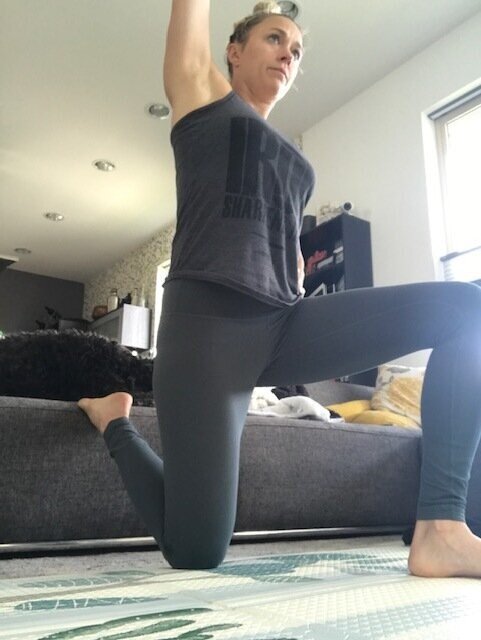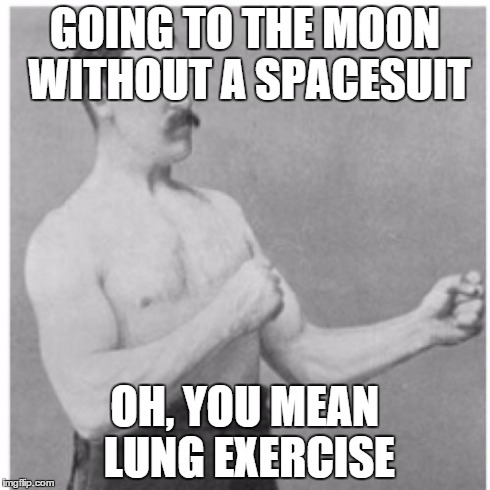It’s day 1,329,902 of quarantine. or at least it feels like it some days.
And while I know many people have figured out a “better” desk or work space situation by now, our bodies are still taking a toll. We have seen an increase in low back and neck pain in our office in the past few months for sure.
Granted…we’re chiropractors, so we DO see those conditions often, but as a sports practice we see many more shoulder and knee issues on average that issues with posture.
Below are three things you can do RIGHT NOW to help get your body moving again.
Get up and do at least ONE OF THEM NOW.
These are designed to be quick exercises/mobility drills that you can fit in throughout your day OR do as a series. Whatever you want. Just do them.
1. Snow angels
For this drill you will need a foam roller. If you don’t have a foam roller, you can use a stack of pillow or blankets.
Lay with your back pressed flat into the roller and arms stretched out by your side, palms towards the ceiling. Begin to move your arms in a snow angel pattern, keeping your hands in contact with the ground. Just go up to about where you feel a stretch in the pecs and then return your arms back down by your side. It is important that you’re not trying to FORCE the arms up into the overhead position.
Keep the arms moving up and down slowly for 2 minutes.
This is a great drill to open the chest, stretch the pecs, AND move the scapula around the ribs and thoracic spine, promoting good shoulder mobility. Do it after a long day at the desk.
2. Couch Stretch
The couch stretch is one of the “go-to’s” for lots of crossfit coaches, chiros, or PT’s when a patient/athlete reports low back pain, and for good reason. When done properly, this stretch allows the hip flexor tendon and psoas to lengthen; decreasing tension on these muscles which can cause pulling into the low back.
Yes, that is my dog on the couch behind me, not a fuzzy blanket.
Kneel down in from of your couch, or just on a pillow with a wall behind you. Keeping one knee on the ground, bring the other knee up into a lunge position.
The KEY here is that you MUST keep the glute of the knee which is on the floor (the hip flexor you are actively stretching) SQUEEZED.
When you keep that glute squeezed, it allows the front side of the hip to relax (it’s called reciprocal inhibition if you must know).
Hold each side for 1-2 minutes, adding in the arm over-head position as demonstrated in the picture if you need some extra oomph.
Make sure that you are keeping your back nice and neutral and not over-arching your back when you do this stretch.
3. Superman Holds/reps
After sitting for much of the day (let’s be honest, even if you have a standing desk, we end up sitting a lot as a culture) we could all use some posterior chain activation. I like these exercises because there are endless possibilities…okay, maybe not endless, but at least three.
Option 1: Just hold
Start by lying on the ground on your stomach. Keeping your hight squeezed together, lift both your lower body and your upper body slightly off the ground using your low back and your glutes. Keep your neck in a neutral position so it’s not cranked up towards the ceiling. Make sure that your stomach/core is engaged…think of this as the way you might tighten your stomach is someone was going to punch you in the stomach. You don’t need to actively pull the bellybutton in or push it out.
A good place to start is 3x 30 seconds of holding.
Option 2: Reps
Start in the same position, but this time lift the upper body and the lower body from the floor at the same time with a 1-2 sec hold at the top. Repeat 2-3 sets 10-15x.
Option 3: Alternating reps
An oldie but still a goodie. Alternate back and forth from lifting the left leg and right arm together, then right arm and left leg together. Start with 3 sets of 10 reps each side.
Of course, if you need extra help our doctors at Seattle Sports Chiropractic are always here for you! let us know what you think after giving these a try!

















